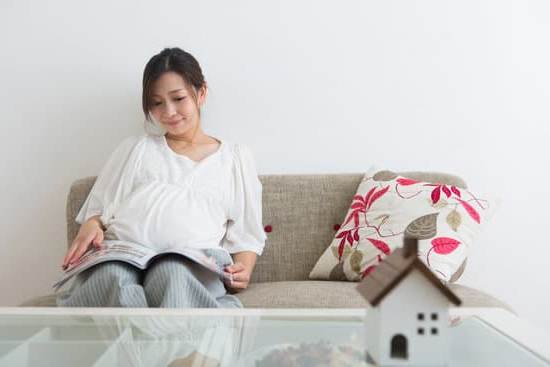When do you start showing during pregnancy is a common question for many expectant mothers. Understanding the various stages of pregnancy and the changes that occur in the body can provide insights into this exciting journey. The first trimester brings about significant changes and symptoms that set the stage for when the baby bump becomes noticeable. Factors such as genetics, body type, and previous pregnancies also play a role in when expectant mothers start showing.
As the body undergoes numerous changes during pregnancy, it’s important to understand the process of “showing” and how it differs for each woman. From the physical transformations to the emotional aspects, embracing these changes is an integral part of experiencing pregnancy. This article will explore the timeline of when the baby bump typically becomes noticeable, along with tips for dressing the bump and dealing with body image issues that may arise during this transformative time.
While every pregnancy journey is unique, celebrating the bump and embracing the beauty of pregnancy can be an empowering experience for expectant mothers. By understanding and appreciating the changes in their bodies, women can celebrate this special time in their lives and look forward to all it has to offer. Let’s dive into this exciting journey of understanding when you start showing during pregnancy and celebrating the uniqueness of each experience.
The First Trimester
During the first trimester of pregnancy, the body undergoes significant changes as it begins to accommodate a growing fetus. Understanding these changes can help expectant mothers navigate this period with greater ease and confidence. Here are some of the key transformations that occur during the first trimester:
- Hormonal fluctuations: The surge in hormones, particularly estrogen and progesterone, can lead to a range of symptoms such as fatigue, nausea (often referred to as morning sickness), and mood swings.
- Breast tenderness: Many women experience increased breast tenderness and sensitivity as their bodies prepare for breastfeeding.
- Weight gain: While some women may not see a noticeable change in their weight during the first trimester, others may experience slight weight gain due to hormonal changes and increased calorie requirements.
- Bloating and constipation: The hormonal changes can also affect digestion, leading to bloating, gas, and constipation for some women.
It is important for expectant mothers to prioritize self-care during this time by getting plenty of rest, staying hydrated, and eating a balanced diet. Additionally, seeking prenatal care early on can help address any concerns and ensure the health of both mother and baby throughout the pregnancy journey.
Body Changes During Pregnancy
During pregnancy, a woman’s body goes through numerous changes, both internally and externally. One of the most noticeable external changes is the development of a baby bump, also known as “showing.” The process of showing during pregnancy involves the gradual expansion of the uterus and abdominal area to accommodate the growing fetus. Understanding this process can help expectant mothers embrace their changing bodies with confidence and pride.
As the fertilized egg implants itself in the uterine wall and begins to grow, hormonal changes occur in a woman’s body. These hormones, particularly progesterone and estrogen, play a crucial role in preparing the body for pregnancy.
As a result of these hormonal changes, women may experience symptoms such as breast tenderness, morning sickness, fatigue, and frequent urination during the first trimester. These bodily changes are often accompanied by bloating or slight weight gain, which can contribute to the initial appearance of a baby bump.
Additionally, as pregnancy progresses into the second trimester, measurable changes become more evident. By this stage, around 13-16 weeks gestation (or approximately 3-4 months), many women will start showing more visibly as the uterus expands beyond the pelvic region and becomes more prominent in the abdominal area.
However, it’s important to note that every woman’s body is unique, and individual factors such as genetics and body type can influence when you start showing during pregnancy. Women who have had previous pregnancies may also show earlier than first-time mothers due to muscle memory and natural laxity in abdominal muscles from previous pregnancies.
The visibility of a baby bump varies from woman to woman based on these factors. Some may notice showing as early as 12 weeks into their pregnancy while others may not prominently show until 20 weeks or later. Regardless of when you start showing during pregnancy, it’s important for expectant mothers to celebrate their changing bodies and embrace this beautiful phase of life.
Factors That Contribute to When You Start Showing
During pregnancy, the timeframe for when a woman starts showing varies from person to person. This can be attributed to several factors, including genetics, body type, and previous pregnancies. Understanding these contributing factors can help expectant mothers have a better grasp of what to expect as their pregnancy progresses.
Genetics
Genetics play a significant role in determining when a woman starts showing during pregnancy. If a woman’s mother or sisters showed early in their pregnancies, it is likely that she will follow suit.
On the other hand, if the women in her family tend to show later in their pregnancies, she may experience the same. It is important to note that this is not a steadfast rule and genetics are just one piece of the puzzle when it comes to showing during pregnancy.
Body Type
A woman’s body type also influences when she will start showing during pregnancy. Women with a smaller build or those who are petite may show earlier due to having less space for the growing baby bump to hide. Conversely, women with a larger build or those who are taller may take longer to show as there is more space for the baby bump to expand without becoming visibly noticeable.
Previous Pregnancies
Another factor that contributes to when a woman starts showing during pregnancy is whether it is her first pregnancy or not. In subsequent pregnancies, especially if they occur within a few years of each other, women may show earlier due to their abdominal muscles being more relaxed from previous stretching during past pregnancies. This can result in the baby bump becoming noticeable sooner than it did in their first pregnancy.
Understanding how genetics, body type, and previous pregnancies contribute to when you start showing during pregnancy can help alleviate concerns and uncertainties about the process of showing as the pregnancy progresses.
When Do You Start Showing During Pregnancy
Early Signs of Showing
During the early stages of pregnancy, the changes in your body might start to become visible, although they may not be immediately recognizable as a baby bump. Some women experience bloating and slight weight gain in the first trimester, which can contribute to a fuller appearance around the abdomen. Additionally, hormonal changes and an expanding uterus can cause some women to notice subtle changes in their shape, even if it’s not yet obvious to others.
The Second Trimester: The Emergence of the Baby Bump
As the uterus expands and the baby grows, the abdomen begins to take on a rounded shape that is clearly indicative of pregnancy. This is an exciting time for many women, as it marks a visible transformation in their bodies and allows them to share their pregnancy with others.
Factors That May Influence When You Start Showing
It’s important to note that every woman’s body is different, and there are several factors that can influence when an expectant mother starts showing during pregnancy. Genetics play a significant role, as some women may have a natural tendency to show earlier or later based on their family history. Body type also plays a part, as women with smaller frames may appear to show earlier than those with larger builds.
Additionally, previous pregnancies can impact how quickly a woman shows during subsequent pregnancies, as her abdominal muscles may have already been stretched from previous pregnancies. Understanding these factors can help manage expectations and alleviate any concerns about timing.
Tips for Dressing the Bump
Pregnancy is a unique and beautiful journey for every woman, and one of the most exciting aspects for many soon-to-be moms is the opportunity to embrace maternity fashion and dress their growing bump. As the body goes through various changes during pregnancy, it’s important to find clothing that not only fits comfortably but also makes you feel confident and stylish. Here are some tips for dressing the bump and embracing your changing body:
- Invest in maternity essentials: As your body begins to change, investing in a few key maternity pieces can make a world of difference. Maternity jeans with stretchy belly panels, leggings, and comfortable tops specifically designed for pregnancy will provide the support and comfort you need as your bump grows.
- Embrace loose-fitting dresses: Flowy dresses that skim over your bump while providing room to grow can be both flattering and comfortable. Look for styles with empire waists or wrap designs that accentuate your baby bump while allowing freedom of movement.
- Layering is key: As your body temperature fluctuates during pregnancy, layering can help you stay comfortable and stylish. Invest in cardigans, blazers, and open-front sweaters that can be easily layered over basic maternity tops.
- Don’t be afraid to show off your bump: Whether it’s a form-fitting dress or a snug top that highlights your growing belly, don’t hesitate to showcase your beautiful bump. Embracing your changing body and celebrating this special time in your life can boost your confidence and self-esteem.
As each pregnancy journey is unique, finding what works best for you in terms of maternity fashion is all about experimentation and embracing the changes happening within your body. Remember that feeling good in what you wear plays a significant role in how you carry yourself during this special time.
Dealing With Body Image Issues During Pregnancy
During pregnancy, many women experience body image issues as their bodies undergo significant changes. It is completely normal to have concerns about weight gain, stretch marks, and an overall change in appearance. One of the common concerns during pregnancy is the fear of not being able to lose the pregnancy weight after giving birth. This fear can lead to anxiety and stress for expectant mothers.
Another common concern is the development of stretch marks on the abdomen, thighs, and breasts. Many women feel self-conscious about these marks, and it can impact their self-esteem. Additionally, the physical discomfort that comes with a growing belly can also lead to body image issues. As the body changes in size and shape, some women may struggle to adapt to these changes and feel less confident about their appearance.
It’s important for expectant mothers to remember that every pregnancy journey is unique, and experiencing body image issues is a normal part of this process. Taking care of both physical and mental well-being during this time is crucial. Seeking support from loved ones, speaking with a healthcare provider, or joining support groups for pregnant women can be beneficial in addressing these concerns.
In addition to seeking support from others, engaging in self-care practices such as gentle exercise, prenatal yoga, or meditation can help alleviate some of the stress associated with body image issues. Embracing the changes that come with pregnancy and focusing on the miracle of growing a new life can also shift the perspective from negative body image concerns to a celebration of this incredible journey.
| Common Concerns During Pregnancy | How to Address Them |
|---|---|
| Fear of not losing pregnancy weight | Focus on healthy eating and gentle exercise; seek guidance from a healthcare provider regarding postpartum weight loss |
| Development of stretch marks | Use moisturizing creams or oils; acceptance of natural skin changes during pregnancy |
| Physical discomfort from a growing belly | Engage in prenatal yoga or other gentle exercises for comfort; embrace the changes as part of the miraculous process of creating new life |
Celebrating the Bump
One of the most exciting moments for expectant mothers is when they begin to show during pregnancy. This visible sign of a growing baby inside brings a mix of joy, anticipation, and often a touch of nervousness for many women. But the big question remains: when does the baby bump start to become noticeable? The answer varies from woman to woman and can depend on several factors.
The timeline for when you start showing during pregnancy can be influenced by your body type, genetics, and whether it is your first pregnancy or not. Generally, first-time mothers may start showing between 12 and 16 weeks, while women who have been pregnant before may show as early as 10 weeks. However, every woman’s body is different, so these are just general guidelines.
In addition to genetic and body type factors, some women may also show earlier or later depending on their individual circumstances. For example, women carrying multiples may start showing earlier due to the rapid growth of more than one baby. It’s important for expectant mothers to remember that every pregnancy is unique, and the timeline for showing during pregnancy will vary from person to person.
| Factors Affecting When You Start Showing | Timeline |
|---|---|
| Genetics | May cause variation in timeline |
| Body Type | Influences how and when you show |
| Previous Pregnancies | Affects the time at which you start showing |
Overall, it’s essential for expecting mothers to embrace their changing bodies regardless of when they begin to show during pregnancy. Whether the baby bump becomes noticeable early or later on in the pregnancy journey, celebrating this physical transformation can help women feel empowered and beautiful as they prepare for motherhood.
Conclusion
In conclusion, the journey of pregnancy is a unique and beautiful experience for every woman. Understanding the changes that occur in the body during each trimester can help expectant mothers embrace the process of showing. While there may be external factors such as genetics, body type, and previous pregnancies that contribute to when a woman starts showing, it’s important to remember that every pregnancy is different.
The excitement of showing during pregnancy should be celebrated, as it signifies the growth and development of the baby. As the baby bump becomes more noticeable, many women experience a newfound sense of pride and joy in their changing bodies. Embracing maternity fashion and finding stylish ways to dress the bump can also add to this excitement.
It’s normal for expectant mothers to have concerns about their changing body image during pregnancy. However, addressing these concerns and focusing on the beauty of pregnancy can help women feel more confident and empowered.
Ultimately, celebrating the bump is a way for women to appreciate their bodies and the incredible journey they are going through. Every pregnancy journey is special and unique, and showing during pregnancy is just one part of the amazing transformation that takes place within a woman’s body.
Frequently Asked Questions
Can You Start Showing at 8 Weeks?
Typically, most women do not start showing at 8 weeks into their pregnancy. At this early stage, the uterus is still within the pelvic area and may not be visibly protruding yet.
Can You Start Showing at 12 Weeks?
By 12 weeks, some pregnant women may begin to show a small baby bump. This is when the uterus starts to expand and rise out of the pelvic region, becoming more noticeable as the pregnancy progresses.
What Is the Earliest a Pregnant Woman Can Start Showing?
The earliest a pregnant woman can start showing varies from person to person. Factors such as body type, muscle tone, and whether it’s her first pregnancy or not can influence when she starts showing. Generally, it’s possible for some to show as early as 9-13 weeks.

Welcome to my fertility blog. This is a space where I will be sharing my experiences as I navigate through the world of fertility treatments, as well as provide information and resources about fertility and pregnancy.





